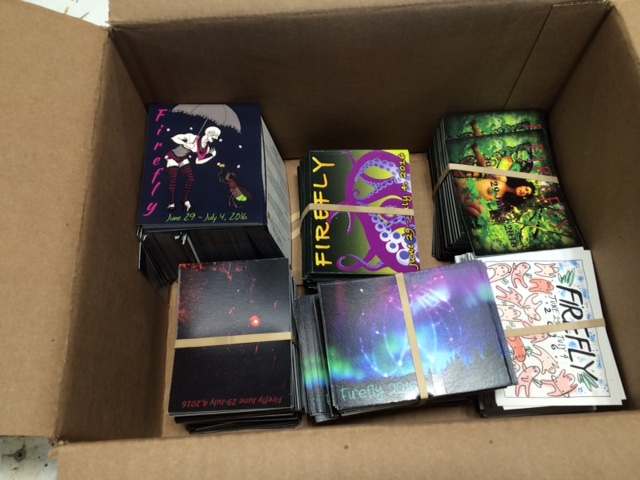So you’re going to Firefly! This guide is essential reading for every participant. This Guide will help you: prepare for the event, know what to expect when you get there, and learn what is expected of you when you leave. Make sure everyone in your group reads it before packing and leaving for the event.
You should read this guide well before you arrive, but you can reference it at the event (there is limit some cell service in the area). Consider also downloading the WhatWhereWhen guide and printing pages of this guide in case you can’t get cell service at the event (service is available, but spotty).
The Site
Firefly is held on private property in central Vermont. It’s about 2 hours north of Boston.
Terrain and Climate
The land is 90 acres of wooded mixed pine forest with some clear or sparsely wooded areas, all with sloping terrain. A small stream runs through it. It could be cold and rainy or sunny, hot, and humid. The trails could be dry or choked with mud. Check weather reports for central Vermont before the event and pack accordingly. The Packing List page is a good place to start.
Directions
Directions and the address are emailed to ticketed participants approximately a week before the event. Do not post directions to any list.
Boundaries, Stream, and Sacred Spaces
Please respect the boundaries of the land and the designated sacred spaces as Firefly is taking place on privately-owned land. Do not use soap or salts of any kind in or near the stream.
No Nudity Areas
Remain fully clothed when in view of the landowners’ neighbors. These areas include the porta-potties, the trails to the porta-potties, the main field, the parking areas, and the greeter and gate stations.
Otherwise, nudity and free expression are perfectly fine throughout most of the wooded area of the event.
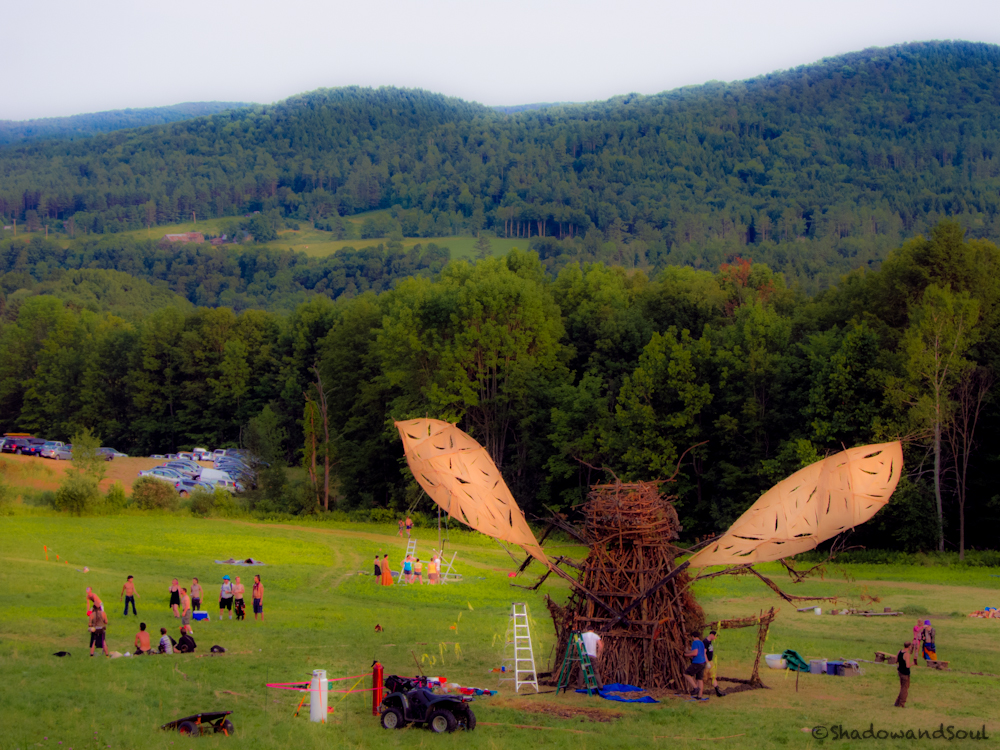
Infrastructure
This is a list of Festival resources and structures to help you find your way around the event.
Map of the Event Site and Infrastructure
The Gate and Greeter Stations
You visit these on the way into the event for ticketing, wrist bands, and important information.
Kiosks
There are usually Kiosks erected at the upper parking and some up the hill that will have maps and event info posted. A final map of event Infrastructure, registered art and registered theme camps is posted on the web site about a week before the event.
Coffee Kitchen Cafe
This kitchen cafe offers brewed coffee, tea, hot water, and dish washing station for your use. You are responsible for trash and any mess you create in this area. (NOT SUPPLIED: cold water, hot beverage cups, or trash cans.)
Bring your own cups to hold hot beverages and leave no trace.
Well
Firefly participants have had a well professionally drilled. Bring a container and pump all the water you want–by hand.
Porta-Potties
There are two locations, near the upper and lower parking lots. Help maintain the porta-potties and replace toilet paper (more is available at the Ranger Station) and remove trash.
There are some old outhouses on the site which are NOT available for Firefly use and they will be marked and cordoned off.
If it didn’t come from your body, it doesn’t go into the porta-potties! The only exception is single ply toilet paper. No trash, napkins, tampons, or other items. These will clog up the poop-eating monster when it comes to clean, and you don’t want to see it angry.
You can pee in the woods but please not near the stream. Do NOT poop in the woods.
First Aid Station
FIRST AID:
- Can help you figure out if you might have an emergency that should be seen by the medics if you are uncertain.
- Can call the medics, provide first aid, and do CPR until medics arrive.
- Can connect you to supplies (bandages, over-the-counter medications, etc…) that you might have forgotten at home.
- First Aid is located in front of the Ranger Station at Mercurial and Verdant.
- You can also ask any volunteer with a walkie-talkie to call us.
MEDICS:
- Can assist in an emergency (broken bone, fall from a high place, overdose, etc…)
- The medics are at Firefly, located behind the Ranger Station at Mercurial and Verdant.
- In an emergency, find any volunteer with a walkie-talkie, or find the emergency call box at Upper Parking.
- When you call, you will need to tell the medics the injury and the location (use nearby path names, theme camps, art installations, etc…). Keep it brief and simple.
- You will also need to wait for the medics at the location to guide them to the injured person. Use your flashlight to help them find you at night.
- Try not to leave a person having an emergency alone. Send for help if you can.
It is recommended for Theme camps to have basic First Aid Kits and for all campers to bring bug repellents, band aids, sun screen, over-the-counter pain medication, and any prescribed medication needed for the week.
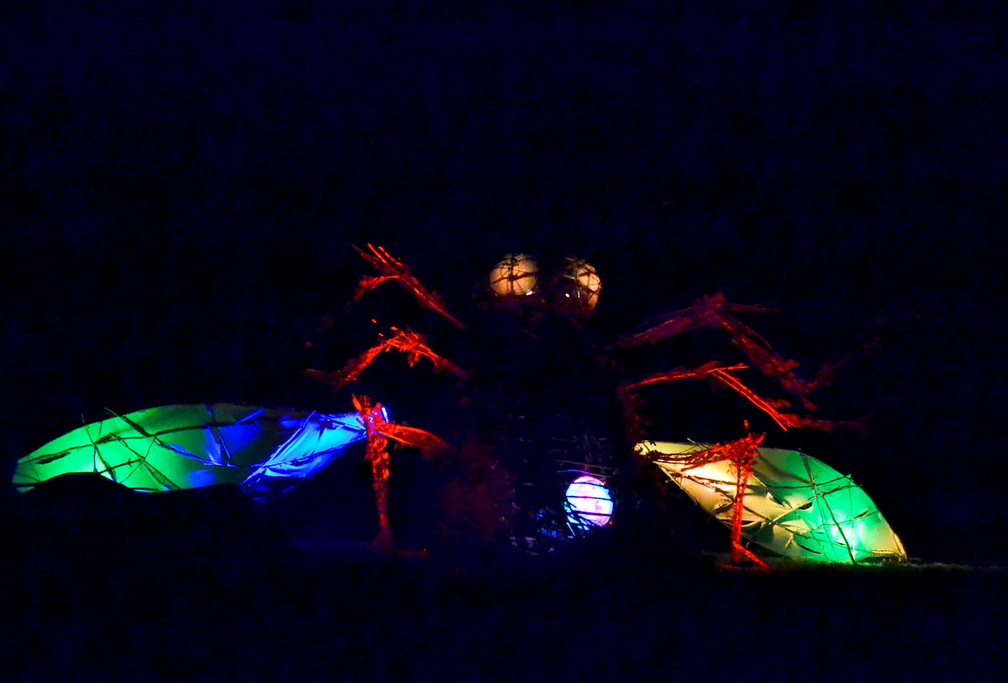
The Main Field, Bug and Temple
The Bug and Temple are located in the Main Field. The Main Field is a quiet space between midnight and 10am. As with all shared spaces at Firefly, please talk with your neighbors if they’re participating in noisy ways which detract from your experience.
The Bug is usually interactive and one of the main draws to the field. The Bug Burn begins with a Fire Conclave (fire performances) on Saturday at sunset, followed by celebratory ecstatic release of the Bug in a large fire.
The Temple is a place for reflection and remembrances. The Temple Burn happens on Sunday after sunset. Temple Burn is typically quiet and solemn, depending on the intentions of the Temple artists.
The Chrysalis in the field was built in 2021 to capture the metamorphic spirit of when Firefly couldn’t happen in person. The butterfly will emerge Friday.
Gnome Station
The Gnome (Volunteer) Station is where Gnomes help other participants help out at the event. They are the volunteers that help volunteers volunteer. They support the other Cores when shifts are not covered by finding a free participant or jumping in themselves. They also help find on-the-spot volunteers when non-scheduled help is needed. There will be binders of all volunteer shift sign-ups found here during the event.
Lost and Found
If you lost something, look for it at the Lost and Found. Its location should be on the event map. If you found something, drop it off at the Lost and Found.
If something is very valuable and you don’t want to leave it unattended, or if your very valuable thing isn’t in the Lost and Found, contact an Event Lead on duty or one of the LNT Core Leads.
Steam Bath
Get clean at the steam bath.
DPW Grotto
See a bridge that is broken or a trail that has washed away? Find a Department of Public Works (DPW) volunteer for assistance. This is where they huddle when they aren’t building things.
Ice Hole
Ice has been freely available the last couple of years when volunteers and donors made it happen. Stay tuned for info about Ice closer to this year’s event via Announce emails.
Sanctuary
Sanctuary is a place for Firefly participants who need a quiet space to recharge. If you are feeling overwhelmed, having a hard time, or otherwise need a safe, quiet place with minimal interruptions, and a friendly soul to check in, please feel free to come to Sanctuary. Volunteer shifts are scheduled throughout the event but there may be times when nobody is present, but that doesn’t mean you can’t utilize the space! Sanctuary is not intended for overnight stays or lengthy recoveries. Participants experiencing a serious medical emergency should seek out our EMT service.
Ranger Station
You can always find a Ranger at the Ranger Station. There are also Rangers roaming the event. If you are lost, injured, or concerned about a safety issue (uncontrolled fire, medical concern, etc.), please speak to a Ranger. They are happy to talk with you, they know the lay of the land, have radios and can call emergency response people. Look for light green T-shirts and a “laminate” (namecard).
In an emergency, Rangers are the fastest way to get responders to your location. Rangers have radios and a plan in place to help outside emergency assistance find and access participants in need.
Professional Security
Firefly hires outside security staff who will be posted near the Gate. They are trained to defuse any potential physical situations that Firefly volunteers may not be comfortable handling and will only be coming into Firefly when needed. They will always be accompanied by specific event organizers.
The Open Stage
Put on a show! This is an open space for scheduled music and other kinds of performance. There will be a sign-up sheet available before the event. Go to the Open Stage page for more information regarding the stage and signing up for a performance slot.
Established Fire Pits
There are approximately 7 established fire pits at the event. Do not create new fire pits. All participants using the fire pits must follow the Fire Policy.
- Burn only wood found on the ground or purchased from Central Vermont. No plastic, cardboard, paper, cigarette butts, plywood, pressure-treated wood, or anything else.
- Do not cut down trees for wood. The landowner does not want his land cleared of trees.
- Fires need to be in a fire pit, surrounded by rocks and free of roots (root fires will put a damper on the event).
- Clear brush, leaves, and pine needles at least 5 feet away from the fire pit so sparks have nothing to jump to.
- Each fire pit must have at least 2 gallons of water and either a shovel or bucket of dirt handy at all times.
- If you see any unattended fire, please extinguish it or flag down a friendly Ranger to help.
- Portable fire pits are allowed as long as they follow the above rules and are elevated off the ground so as to avoid a burn scar.
- Tiki torches and other torch-style open fire devices are not allowed at the event.
Vermont is serious about its air quality and burning paper is against the law. These links have lists of what you can and cannot burn: Backyard Burning Fact Sheet | Open Burn Pamphlet | Health Effects of Burning Various Things.
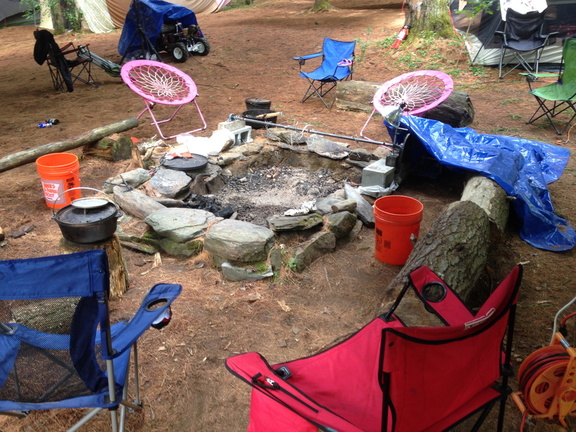
Tickets
You’ll need a ticket to participate at Firefly, but not to come to Work Weekends. The most up-to-date information on tickets can be found in the Ticket Section.
General Information
You must create a Firefly Account in order to buy a ticket. If you want to gift a ticket to another participant that person needs to create an account as well. One ticket per one account.
When announced, you must then register (using your account) to be added to a lottery. Groups of participants and families will have the option to register and added to the lottery together.
When tickets are ready for purchase, the option to purchase tickets are sent via email and the offer is good for approximately a week. All tickets are will-call and are to be picked up at the Gate. Bring your ID! Your ID is your ticket and will be matched to the ticket list at the event gate. If you do not have a government-issued ID, please contact tickets@fireflyartscollective.org.
NO tickets will be available for purchase at the gate. If you have not paid for a ticket or do not have a picture identification to match a name on the ticket list, you will be turned away.
Until Gate opens, if you purchased your ticket and find out you can’t make it, you can sign in to your account and return it for a full refund–someone on the waitlist will be happy you did!
Children
Minors of all ages are welcomed at Firefly. Children 11 and older require a ticket. Children 10 and below do not need a ticket but must be registered in the ticketing system. All minors under 18 years need to arrive to the event with a parent or guardian.
Firefly is not necessarily a child-friendly event: guardians will need to work with their children about what is appropriate to see and do, since since some events might not be suited for your child’s participation. If you bring children, please act in a safe and responsible manner, and keep aware of where they are. There are camps and events where children are specifically asked to not participate.
Firefly is whatever all the participants make it: kids’ involvement in projects and events is a valued tradition at Firefly.
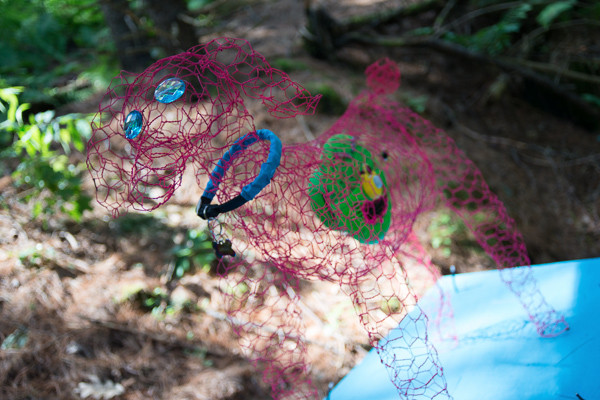
Pets and Service Animals
Pets are not allowed at Firefly. Ensure the safety and well-being of your pet and the other Firefly participants by not bringing your pet. Firefly takes place in a (sometimes) unforgiving physical environment. You will be asked to leave if you arrive with a pet.
ADA certified service animals are the only type of animal permitted at Firefly. For details regarding service animals please refer to the Firefly Policies page.
How to Contribute
Get involved—this is your festival! There is lots of planning, creativity, and effort to make Firefly happen.
Volunteer, Bring Art, Lead
The Firefly event is run by volunteers. The Firefly Board hosts the festival and the Festival Leads supports the Cluster Leads who support the Core Leads who run a Core. Firefly won’t happen without all that support. Check out our Participate, Volunteer Cores, Art at Firefly, and Theme Camp pages on the website for more information on all the stuff that gets done, who does it, and how you can too.
The week you’re at the event, and you have some time, offer help to those who look like they could use a hand! Everyone that you see working to make this event happen is a volunteer (even the Board of Directors). They started out just asking what needed to be done.
Take care of each other! Don’t wait to be asked: volunteer!
Town Hall Meeting
Every Spring Firefly hosts a Town Hall Meeting in the Boston area where newbies and veterans alike can find out how to help make Firefly happen. Meet Firefly core leads and hear about all the volunteer possibilities. Be sure to add yourself to the Announce email list to find out the date and location of the next Town Hall Meeting.
Work Weekends
Work Weekends are where we pick up the chainsaws and shovels and do the infrastructure projects needed to make Firefly happen. They are also used for Art and Theme Camp placement, Bug building, Temple building, and some preliminary Theme Camp preparation.
You need to sign up for each Work Weekend you plan to attend.
For the most up-to-date information, logistics, and how to sign up for a Work Weekend, go to the Work Weekend page on the website.
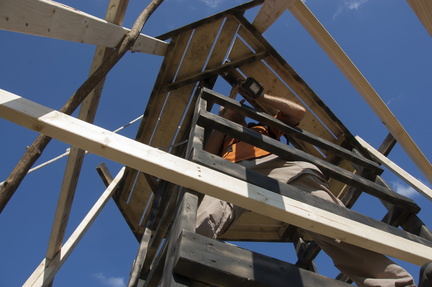
Event Volunteer Shifts
Volunteer shifts at Firefly is the best way to meet new people and learn new things. Go to the Volunteer page to learn more.
When you sign up for shifts in the Spring, do not forget to put the day, time, and shift in your calendar. That way you will remember in July where to go and at what day and time.
If you are a night owl, do not sign up for volunteer shifts in the morning. If you are a morning person, do not volunteer for a midnight shift.
If you sign up for a shift before the event begins and you can’t make it, be sure to sign into your Firefly account and make those changes to the Volunteer Schedule Grids so others can sign up.
If you are at the event and you can’t remember or find your schedule, go to the Gnome Station and there will be printed out binders with sign up grids to help you find your shifts.
Bringing and Supporting Art
Grants
Firefly supports the community by offering all kinds of Art Grants. Grant recipients are guaranteed to be able to purchase a ticket and the art has a reserved spot on the Art Truck. Grant recipients are always in need of help setting up at the event and the Art Truck needs volunteers to help load, unload, and have moop sweeps done.
Bug and Temple
The Bug and Temple are built before the event during the Work Weekends.
The Bug Burn begins with a Fire Conclave (fire performances) and begins on Friday at sunset. More information on performing at the Conclave go to the Fire Policy page.
Art Truck
The Art Truck leaves the Boston Area before the event and is available for Grant Recipients and Bus Riders. The Art Truck is always in need of drivers, loading and unloading, and moop sweeps. Contact arttruck@fireflyartscollective.org for more information.
Theme Camps and Art
Some Firefly participants share resources and create a Theme Camp. Some people camp alone. They bring art, host performances, feasts, events, and workshops. Heck, one person can have a theme camp. There are few rules regarding who can call their camp a theme camp and who can post events in the WhatWhereWhen.
If you don’t want to reserve a campsite, a place for your art, or be on the map, you can show up at the beginning of the event and claim a campsite. But be sure to avoid any ribboned-off areas and double-check with your neighbors before you claim a spot!
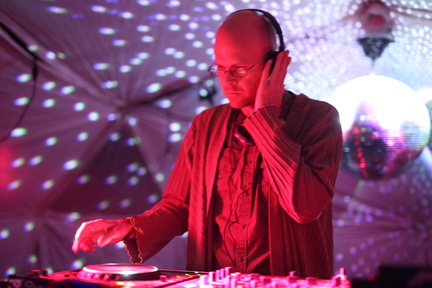
Performances and the Open Stage
Firefly has an Open Stage available for your performances. Anyone can book it to host events. Go to the Open Stage page for more information.
Placement and Map for Theme Camps and Art
To reserve a spot at the event for your Art or Theme Camp and get listed on the map, you need to fill out the Placement Registration form and show up at the Placement Work Weekend.
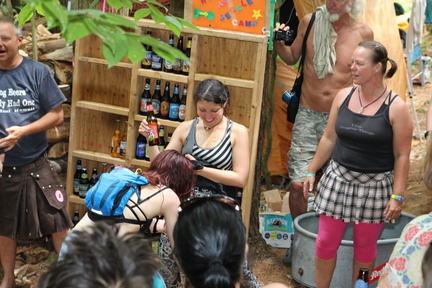
The WhatWhereWhen
The WhatWhereWhen (WWW) is a list of events, workshops, activities, performances, artwork, etc. that happen during the event. Submissions and postings usually start the month before the event. Stay tuned to Announcements Emails for updates.
You use the WhatWhereWhen Application to post your events.
The WWW is posted online in digital and printable form. It has been hung on kiosks in previous events.
Fire Art
Firefly allows and encourages Fire Art. Fire Art is comprised of Open Fire, Burnable Art, and Flame Effects. (Pyrotechnics, including sparklers and smoke grenades, are NOT permitted at the event.)
If you plan on bringing Fire Art to Firefly you must read the Fire Policies, register with Fire Core, and register your art for Placement. You must register with Fire Core BEFORE registering with Placement.
For more information about Fire Art at Firefly and how to register your fire art go to the Fire Art page.
Before operation, your Fire Art must be inspected by the Fire Core’s Fire Art Safety Team (FAST), which includes artists, fire safety volunteers, and people with professional experience. They will assist you in the safe execution of Fire Art.
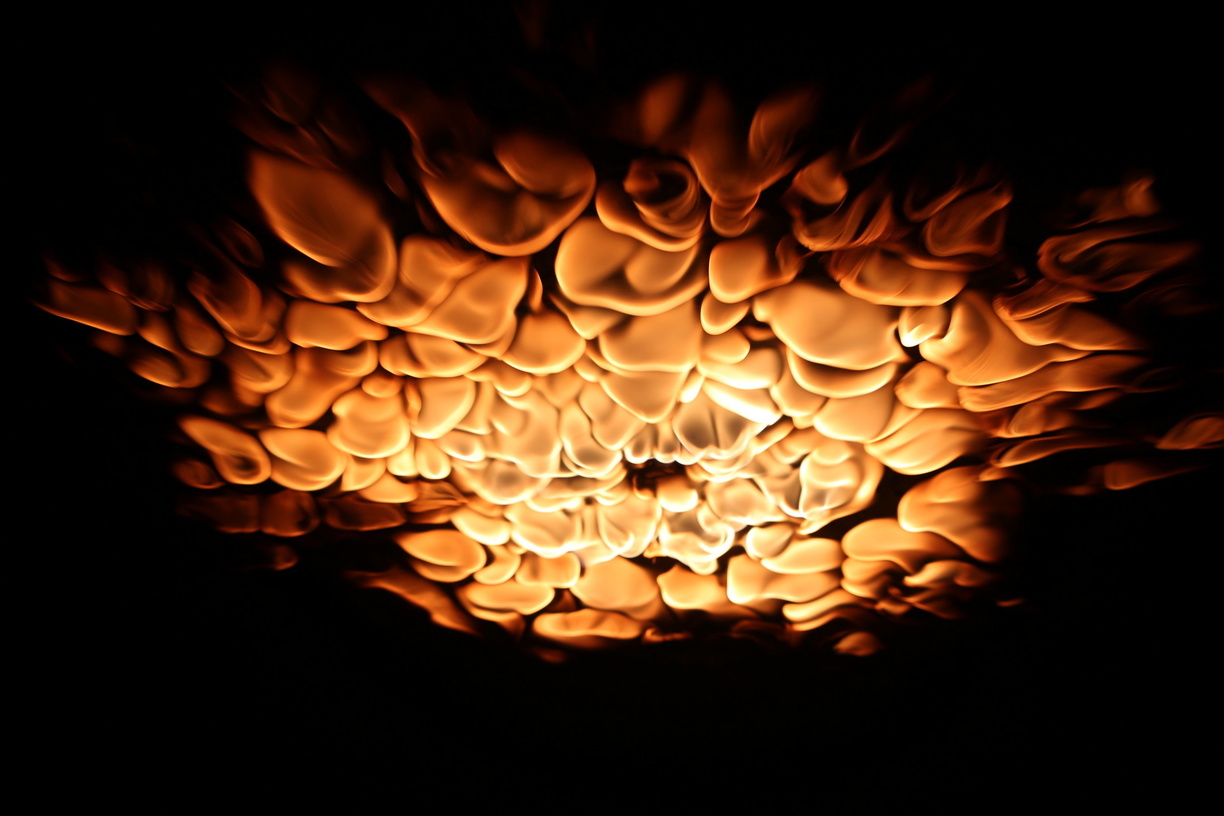
Fire Performance
Fire spinning and performances involving fire are welcome at Firefly! Fire spinning should happen in an adequate clearing, and only in approved spinning areas. If you spin, please get familiar with the Fire Policy.
Please do not interfere with spinners. Give them space to perform.
Anyone wishing to perform in the Fire Conclave prior to the Bug Burn must check in with a Fire Core lead by attending one of two brief fire safety meetings held during the event. Please check the Firefly Facebook Group or reach out to fire@fireflyartscollective.org for official dates and times.
We are always looking for a few volunteers to be fire safeties during the burns. All are welcome, no previous experience required. Sign up to volunteer after you receive your ticket. Volunteers must also attend one of the two safety meetings mentioned above. If you have any questions, please reach out to Fire Core.
Sound and Electricity
Plan on providing your own power. Please talk to us about noise issues if you plan to have a generator or large scale sound. For large sound camps or any questions pertaining to sound, contact sound@fireflyartscollective.org.
See the generator section on the Fire Policies page for additional guidelines on generators, fuel management and extension cord loads.
The main field is a quiet space between midnight and 10am.
If you plan to bring amplified sound louder than a boom box, contact sound@fireflyartscollective.org.
Loud events (dance parties, drum circles, primal scream flash mobs) and noisy art (fire poofers) fall under these policies and Guidelines:
- Be aware of specific sound requirements, which vary year to year
- No amplified sound in Quiet Designated areas
- Be aware that amplified sound may be banned for certain days, hours, or locations
- Art and theme camp placements are informed by sound considerations, or history of the camp
- Art and theme camp speakers are assigned to point towards a designated compass coordinate, which varies by location
- Sound core may visit neighboring areas to check sound levels as heard from outside
- There are immediate and/or planned responses to sound complaints
- Sound core may ask you to adjust your sound, turn it down, or turn it off
- Gear Storage for Musicians is not provided
- We do encourage you to bring your creativity (and your instruments). There usually is at least one camp with a live sound stage. Make friends, and prepare to protect your own musical investments
Be aware that failure to comply with these requests and policies can now result in immediate ejection of the individual or the camp from the event. In order to keep Firefly at the current location the neighbors have to be happy. Noise issues have been the biggest complaint in previous years.
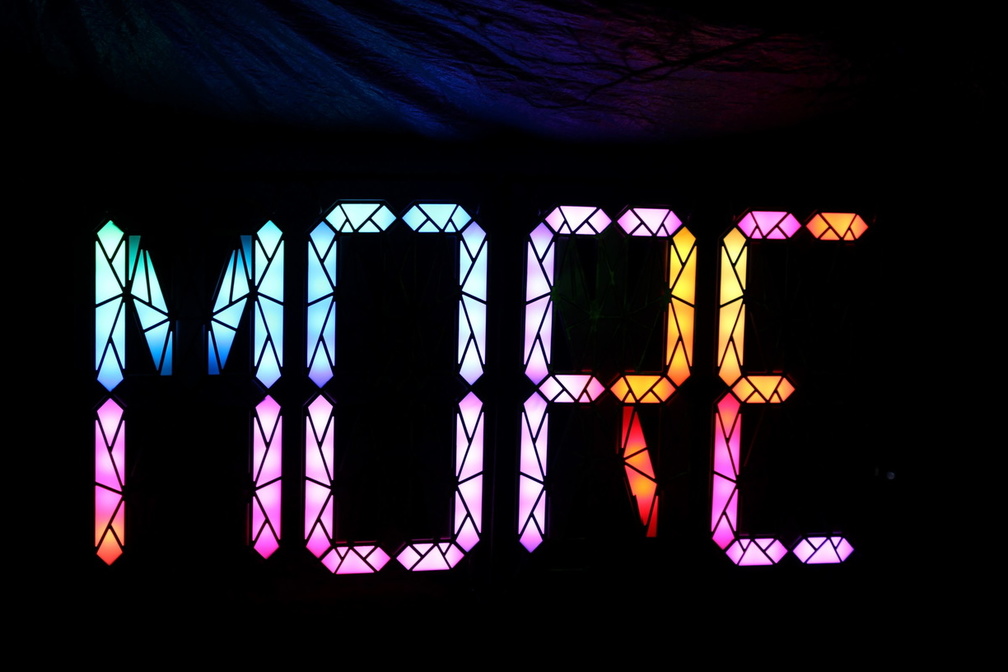
Arrival and Exodus
Learn how to travel, where to go, and what to do, and what to expect when you arrive to the event, and when you leave.
Arrival Essentials
Everyone will have their identification checked against the ticket list when arriving at the Gate. You will receive a Firefly wristband to wear throughout the event. A different color wristband is used for participants under age 21.
You can pick up a red NO PHOTOGRAPHY wristband at the Gate if you don’t want photographs taken of yourself during the event. (Photography Guidelines are outlined in Code of Conduct section of this guide.)
When you arrive, after a few minutes checking in at Gate you’ll head to the Greeter Station. All arrivals, car or bus or bike, should stop by the Greeter Station for an introduction and important info.
Arriving during daylight hours is highly encouraged—finding and clearing a campsite in the dark can be tricky. You cannot camp in your car overnight.
No Re-entry
No re-entry for shopping from noon Wednesday to noon Monday. If you leave the Firefly event, you will not be re-admitted. Be prepared with enough water, food, and supplies for the duration of the event. If you forget something, ask a friendly Firefly if they can help you out.
If you have an emergency and need to leave site temporarily, talk to a Gate Lead and they will work with you. Exceptions to the no re-entry policy require approval. Find a Gate Lead or email gate@fireflyartscollective.org if you know you will need to leave temporarily before the event.
Arriving by Car
If you’re driving a car full of people, make sure that they have purchased a ticket and they have their identifications on them before you leave for Vermont. The whole car will be turned away if one of you does not have an ID or is not on the Ticket List.
When you arrive at Firefly, please pull immediately off the road into the gate queue. Do not block the road. This is a serious issue as we do not want to block any public roads. The neighbors do not like this, and we respect that.
After you have gone through the gate process of IDs, ticket lists, parking passes, and wrist bands, you need to be properly welcomed by the Greeters. When given the word, you may proceed to unload your gear, park, and find a camping place.
Parking
In 2024, tickets come with a parking pass — no need to buy one.
There is limited parking at Firefly. Your car might be parked away from the event so you might need to drop off gear at a drop off zone at the gate or upper parking. You will be shown where to park you car off site, and then you will be shuttled from the off site parking lot back to the event.
Be prepared to haul your gear up the hill to your camp site by hand. You can bring a dolly or cart (bungee cords are useful to hold things down). If you have extra carts, please bring them and put your name and camp name on them so they can find you after arrival.
Read Everything about transportation options, car pooling, and parking on our Getting There page on the website.
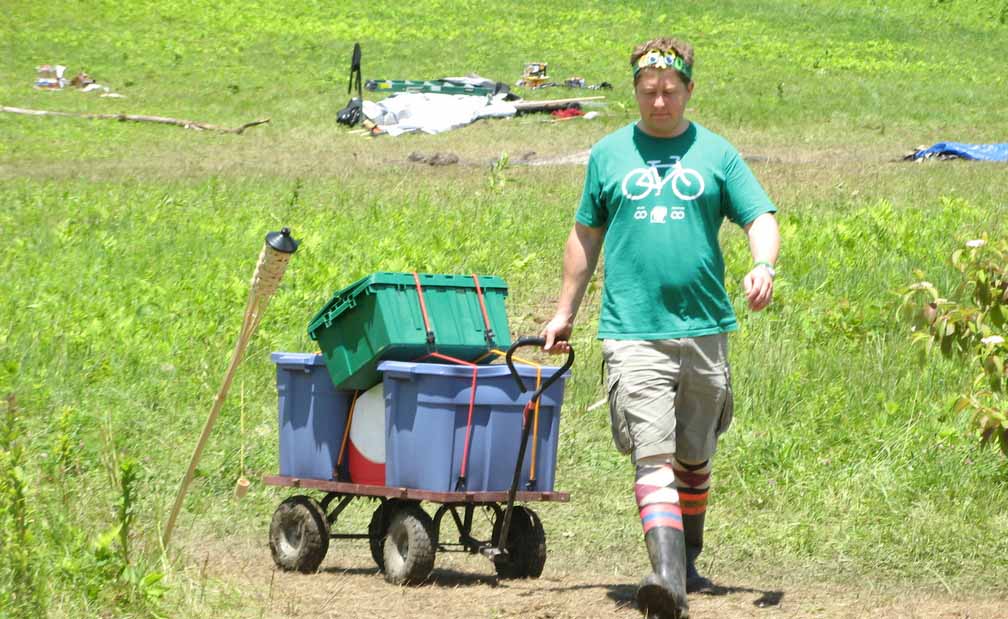
Arriving by Bus
See the Getting There page for more information.
Early Arrival
If you plan on being on site before Tuesday at noon, you must be approved before you arrive. Stay tuned to the Getting There page for when Early Arrival Applications are being accepted. Email early@fireflyartscollective.org for information.
Early Arrival-approved volunteers (early arrival shift volunteers, art builders, and theme camp builders) may enter then. Make sure to visit the Gate for your wrist band.
If you were not granted permission for Early Arrival, please do not come to the site before the official start of the event. You will not be let in.
A very limited number of AWD/4WD/high ground clearance vehicles may be given access to drive up the trail into the event to unload gear during the Early Arrival and Exodus periods. To apply for vehicle access please go to the GTFO – Vehicle Access page. Vehicle access to enter/exit the woods during Early Arrival and Exodus is managed by GTFO.
NO vehicles except DPW vehicles will be allowed on the trails during the event.
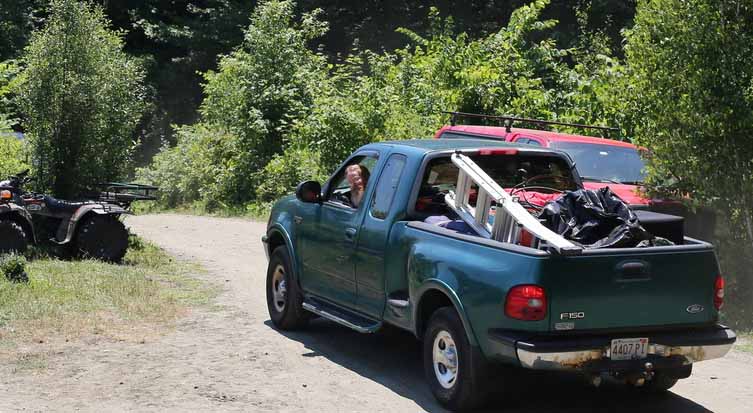
Departure (Exodus)
Please be packed and able to leave by 3pm on Monday.
Do a moop sweep after all your gear has been removed from your camp site. After you remove your gear, scatter brush and tree limbs to make your camp disappear. Moop sweep around your car and where your gear piles were.
Moop is “matter out of place”. Moop sweeps are defined in the LNT section of this guide.
A very limited number of GTFO registered vehicles may be able to drive up the trail into the event to load gear during the Exodus period. To apply for access go to the Transport page on our website for details. Only AWD/4WD with high ground clearance will be considered for trail access.
In previous years there has been a food drive drop-off area for the local town. It is usually set up in Upper Parking at the end of the event. They do not accept water, perishables, or opened food containers. If there isn’t a Food Drive drop off area this year, do not leave anything behind.
After the Event
Only those who signed up to help with the Leave No Trace Core (LNT Core) may remain on the land past sunset on Monday. Visit that page for more on volunteering with LNT.
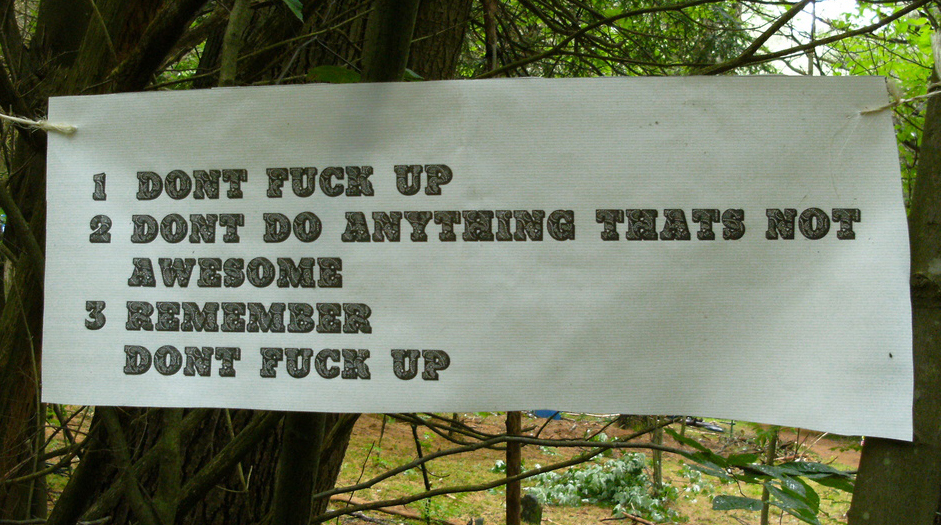
Prohibited Items
You will be turned away at the gate if you bring:
- fireworks (including sparklers and smoke grenades)
- firearms
- wood from outside of Central Vermont
- handheld lasers
- animals
Do not bring:
- tiki torches
- candles
- feathers
- sequins
- confetti
- Moopy art, clothes or decorations
Traditions and Behavior
Before committing to participating in our annual July event, learn about Firefly’s traditions, values, and culture.
Culture and Values
Firefly is an arts festival inspired by the Ten Principles of Burning Man. We are a community of makers and free thinkers putting on a DIY weird, art party. We value free expression and community involvement.
Firefly’s mission and tradition is to foster a collaborative environment and community for participatory arts, encouraging people to express their creativity, and challenging them to extend their concept of both community and art.
Code of Conduct
All events organized by Firefly Arts Collective are run within a Code of Conduct that each participant is expected to follow. While we value self-expression, that does not include harming your neighbors. We as a community do not tolerate sexual harassment or sexual violence and expect participants to be able to communicate about consent and to respect each others’ boundaries.
- Participants are responsible for their own behavior and resolving their own issues at all events organized by Firefly Arts Collective.
- Firefly Arts Collective strongly suggests behaving in a manner that does not make other participants feel unsafe or threatened.
- Firefly Arts Collective will not condone any behavior that endangers its ability to hold the annual festival and other community events.
Before going to Firefly, please read our full Participant Code of Conduct.
To learn more about how our Conduct Committee investigates and resolves incidents, see our Conduct Committee Policies page.
More Ground Rules
There is no:
- Vending
- Sleeping in your car
- Dumping trash or food waste
- Pooping in the woods
- Urinating near/in the stream.
Please respect the no nudity designated areas.
Photography and Recordings
If you plan on taking photographs or other type of recordings there are Photography and Recording Guidelines for review on our website. Here is a summary:
- Do not take pictures or videos in or near areas with “No Photography” signs.
- Do not photograph participants wearing “No Photography” wristbands without getting explicit consent.
- When in doubt, ask before photographing anyone.
- Identify and inform people who are pictured before posting photos or videos of them on social media.
- Remove or delete pictures of participants if they request you do so.
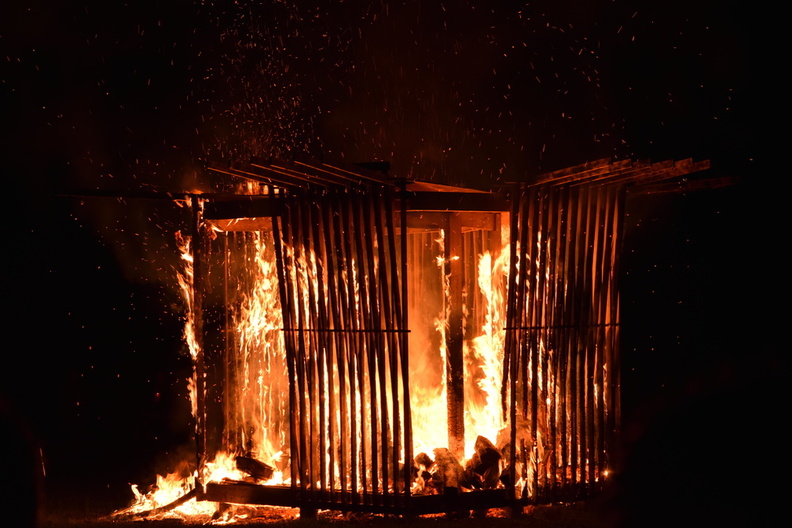
Leave No Trace (LNT)
Firefly is a Leave No Trace event. WE DO NOT SUPPLY trash service, trash bins, dumpsters, or a trash team.
Everything you bring to Firefly needs to go with you when you leave the event.
LNT Basics
- Pack your own trash bags and take all your trash with you.
- Throw out unnecessary packaging while packing for the event.
- Bring your own reusable beverage container, dishes, and eating utensils.
- Offer to take a bag of excess Firefly trash or recycling with you at Exodus.
- Do not burn trash and food waste in the fire pits. Keep paper, cardboard, trash, and cigarettes out of the Firefly fire pits.
- Carry a moop bag (a small bag for trash) on your person during the event, in case you find moop on the ground.
- Don’t leave your trash at other camp sites or communal areas.
- If you smoke, carry a tin for ashes and butts.
- Respect the porta-potties and don’t put trash of any kind in them.
- Firefly organizers cannot accept donations of leftover food, supplies, or water.
The seven principles of Leave No Trace can be found at the Leave No Trace website.
Moop
Moop is: Matter Out of Place. If it didn’t originate in the woods, it doesn’t belong there. Pick it up and take it home with you.
LNT Moop Sweeps
All week long and right before you leave, make time to do moop sweeps of your campsite and areas you frequented during the event. Look up at trees for ropes, ribbon, clothes, and check under pine needles for moop.
Leaving excessive moop at your art or Theme Camp site could result in losing your Placement in future years.
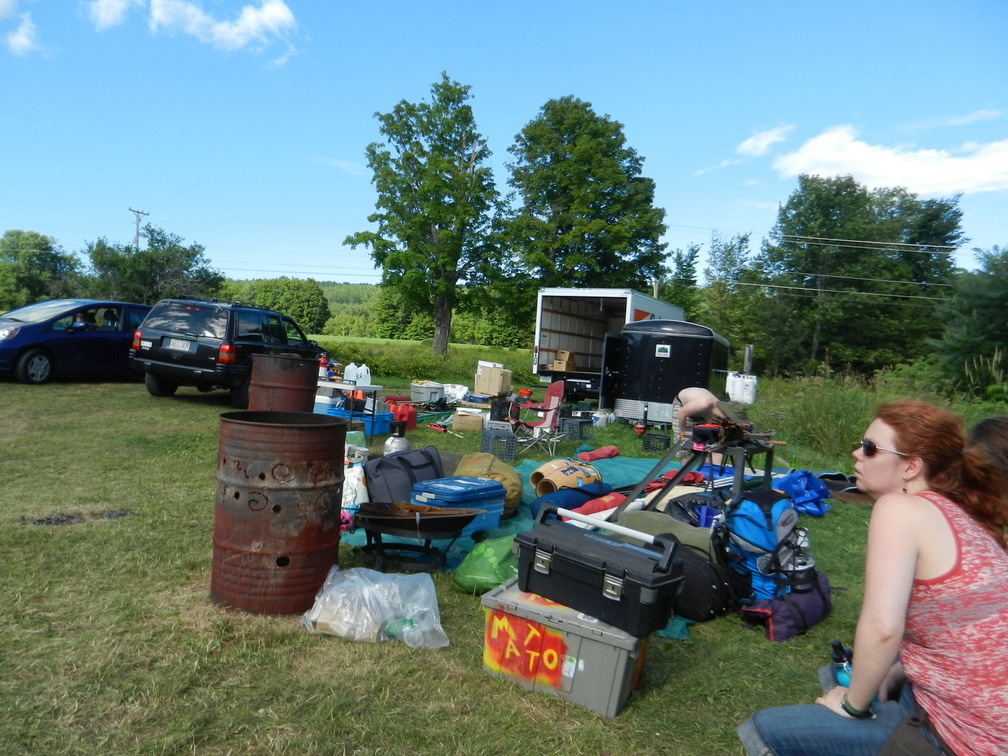
Camping
There is ample room to pitch a tent and camp out. Please respect the boundaries of the site. There are open camping areas and designated theme camp areas, as well as areas put aside for quiet camping.
Finding a Camp Site
- There is NO sleeping in your car overnight.
- Look for the open camping areas on the map located on the kiosks.
- Avoid areas marked off with ribbon—they are either sacred spaces, or reserved for theme camps, or infrastructure.
- Double-check with your neighbors about your new spot.
- Arrive during daylight hours—finding a campsite in the dark can be tricky.
- Camping is not allowed in the main field.
- Do not set up camp in trails and paths.
- Be aware that camping sites may be a 5-15 minute walk from the porta-potties and parking lots.
If for some reason you are unable to camp in the woods (e.g. health reasons), email lead@fireflyartscollective.org so other arrangements can be made.
Caring for your Camp Site
In an effort to reduce our impact on the land, and in order to be respectful of the the landowners’ wishes:
- Do not bring a leaf-blower into the woods. Raking is appropriate in areas around fires, burn barrels, and fire spinning circles to prevent fires from spreading. Do not rake paths and camping spots completely bare, as that 1) disturbs habitats unnecessarily, and 2) will create slick mud pits when it rains – leaf litter does a little bit to help prevent paths and camping spots from becoming outright mud puddles, provides valuable nutrients to the soil and is important for many woodland critters.
- Do not bring a weed whacker into the woods to cut down ferns or other vegetation. Folks may place their tent over them – they will bounce back after the event. Shredding them with a weed whacker or tearing them out of the ground results in less and less of them sprouting each year, changing the habitat and look of the forest.
- Do not cut or damage saplings. Whatever is standing vertical and alive is to remain so. You can move sticks, branches, and chopped up wood out of your way in order to make room for your camp infrastructure or to outline paths. If you spot a tree or branch dangling menacingly over your camp, bring this to a Work Weekend lead’s or to DPW lead’s attention.
- Do not terraform your campsite. If whatever you are planning on doing requires shovels or mattocks, do not do it.
And a final, but also super important note:
- Do not do any terraforming that may redirect rainwater into main paths. Drainways have been specifically shaped along the main vehicle accessible paths in order to allow rainwater to cross these paths without causing much damage, or to flow away from the paths altogether. Modifying these drainways or redirecting rainwater in other ways may compromise paths and make traversal much more difficult and less safe for everyone, especially in the event of emergency or if the entire site needs to be evacuated expediently due to extreme weather.
Lighting and Trail Lighting
The best camp is one you can find your way back to at night. Light up your site and smaller trails near your site. Fireflies are known to stay up all night wandering the woods with eyes half-blinded by the many glowy wonders. You may want to mark trails and entrances to your camp with glow-sticks or glow-in-the-dark art.
Most of the major trails are lit at night by the volunteers for DPW. It’s up to the rest of participants to light up the rest of the trails. Some folks get creative and bring back their trail light art year after year. NO tiki torches or candles allowed! Electricity is not provided. Bring extra batteries. Solar lamps work but sometimes it’s too dark in the tree-covered woods to fully charge them.
Headlamps are nice to bring. Keep it in your pocket, around your neck, or dangling from a belt loop when wandering around. You don’t have to keep it on your head (since it blinds other Fireflies). Some of them come with a red, low-light mode that you can use when walking around if preferred. Headlamps are essential for hands-free porta-pottie visits or when you have to rummage through dark tents for lost items. A flashlight is no substitute!
If you set up any art or structures that someone could trip on, crash into, or be clotheslined by, it is very important to light them up or take them down at night. Be creative with it!
Shelter and Weather
The ground at the Firefly site contains clay, so water often collects or flows along the surface before being absorbed. Before you set up, take a close look at your site and think about how it will drain. Choosing the right place for your tent and camp will help you avoid waking up or dancing in a puddle. Ground that is completely cleared of leaves and brush is more likely to erode and turn to mud.
Portable canopies are useful and it is possible to cover large clearings with tarps hung from trees. Use the Blink discussion list or the Facebook Group page to learn more from our community’s many self-made tarp experts.
Firefly happens rain or shine. Check the weather report for Central Vermont before you leave and pack accordingly. It almost always rains during Firefly, which means trails and roads can get muddy so bring boots and dry socks. It can get cold at night so bring insulating padding to sleep on. Bring sunscreen, sun hats, and umbrellas for the field and when going to the porta-potties.
You will have more fun if you are prepared, and Radical Self Reliance is the bomb. See the Packing Lists page to help you survive.
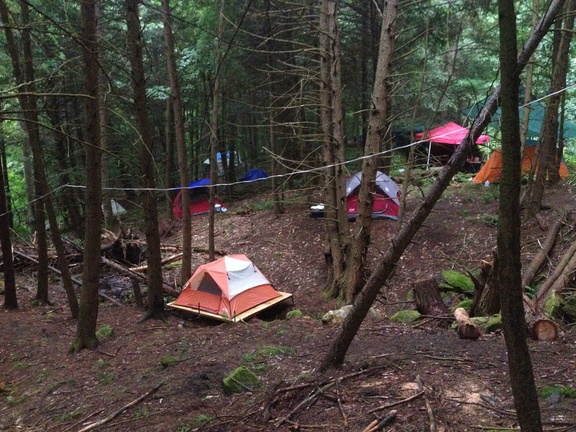
Water
You must bring your own water or pump it from the Well.
Firefly participants contributed to a professionally-drilled hand-pump well, located at the woods entrance from the Field. You can fill water containers there.
There is a small stream running through the site, but it may be only a trickle if it’s a dry year. Do NOT use soap or shampoo in or near any body of water. Even Dr. Bronner’s and other “biodegradable” soaps are not acceptable. When using any kind of soap, wash and rinse at least 100 feet from the stream. That includes bodies and dishes.
You can bathe using a sun shower: they hold 5 gallons, which is sufficient for 2-3 showers. If using soap, stay 100 feet away from the stream. Wet-wipes can be used, but buy the fragance-free ones or you will smell like a baby all week.
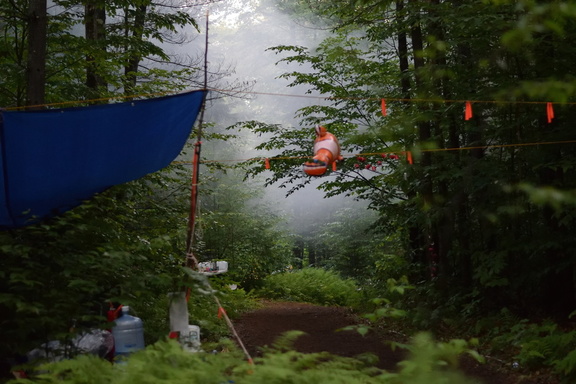
Bugs and Ticks
It’s the Vermont woods in July—there will be bugs and ticks. Be prepared with punk sticks, bug repellent, garlic, or whatever other repellent method you prefer. Clothing is optional when wandering the wooded part of the site, but wearing clothes helps reduce the chances of getting ticks and therefore contracting tick-borne illnesses. Check for ticks every day.
Food and Cooking
- You will need to bring enough food for yourself. There is no event re-entry for shopping or picking up take-out.
- You can bring gas stoves to cook your food.
- Charcoal grills are not recommended since you need to take the ash with you at the end of the event.
- You can cook in established fire pits, but these need to be supervised when lit, so it isn’t guaranteed that you can find a lit fire when you’re hungry. Do not make new fire pits. Please see our Fire Policy for more details.
- Coffee, tea, and hot water will be provided by a crew of dedicated volunteers in the Kitchen Cafe. Bring your own hot beverage cup.
- Carry your cup and a spork while wandering around! You never know when a generous Firefly may want to fill you up with something yummy.
- Animals don’t care for techno, folk, or metal, but in case they are overcome with hunger, keep all of your food outside of your tent, inside animal proof containers, or hung from a tree.
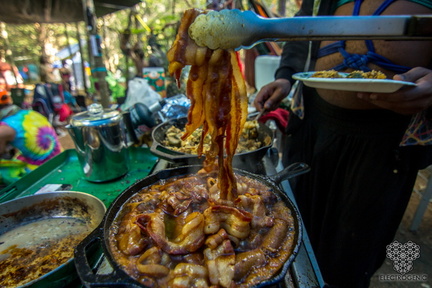
Ice
Ice for your coolers and cold beverages have been available in previous years by Ice Hole volunteers and donors. Pay attention to the Announce List emails on how to volunteer and donate to Ice Hole.
Gear, Clothing, and Costumes
You must bring your own tent, sleeping bag, insulating padding or a cot to sleep on (the ground is cold even in the summertime) and general camping gear. The ground is sloped and lumpy. If you have never camped in the woods in New England, ask around for advice.
Bring a variety of clothes and footwear for different weather conditions: galoshes, boots, lots of dry socks, an umbrella for trips to porta-potty, sun hat, warm hat for evenings, light weight cloths and cold weather clothes.
Make sure any clothing and costumes you bring do not have feathers, sequins, confetti, or moopy decoration.
When deciding what to pack, remember you will need to move your gear up a hill, on foot, along dirt paths that get muddy when it rains. Bring a sense of adventure and self-reliance, and if possible, bring friends who will help each other and keep a good attitude under challenging conditions.
See the Packing List for more recommendations.
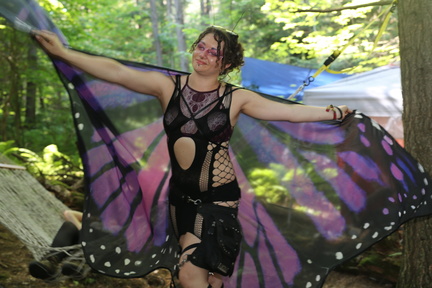
The Last Word
Participate! Create value! Shine your light! Do your dance!
Share your Firefly vibe with those you meet! Share your art, song, healing, and vision.
Have you tried every path? There just might be a surprise!
Take care of each other! Help each other along the path.
Don’t wait to be asked: volunteer! You might make a new friend.

